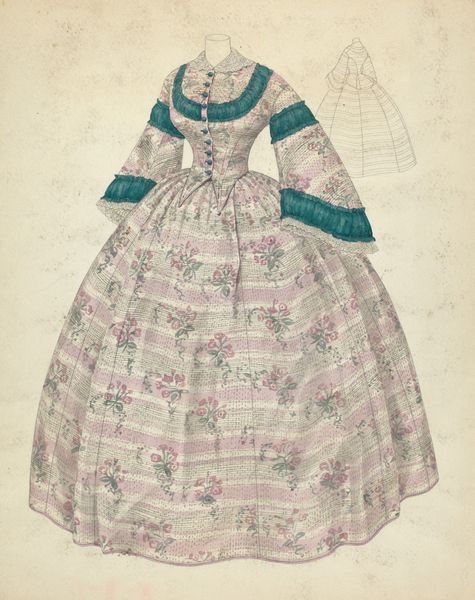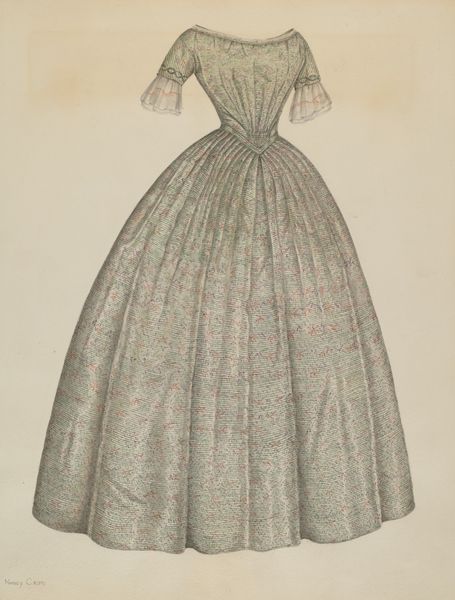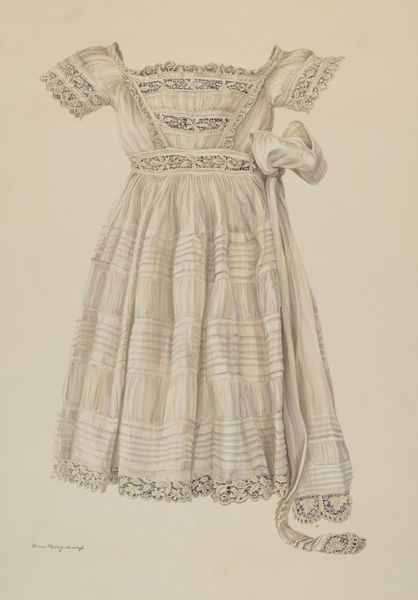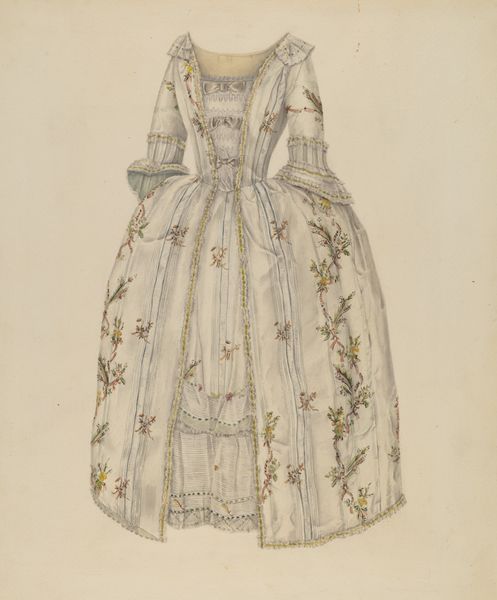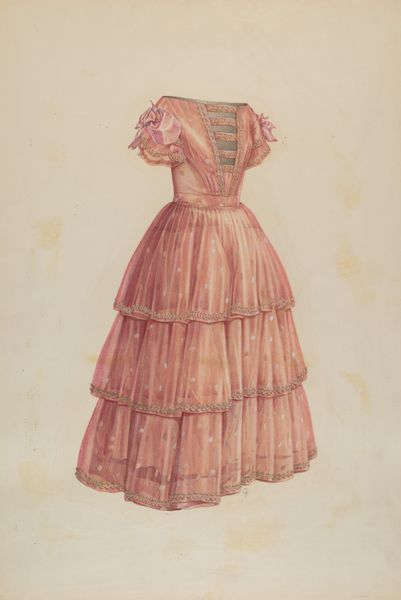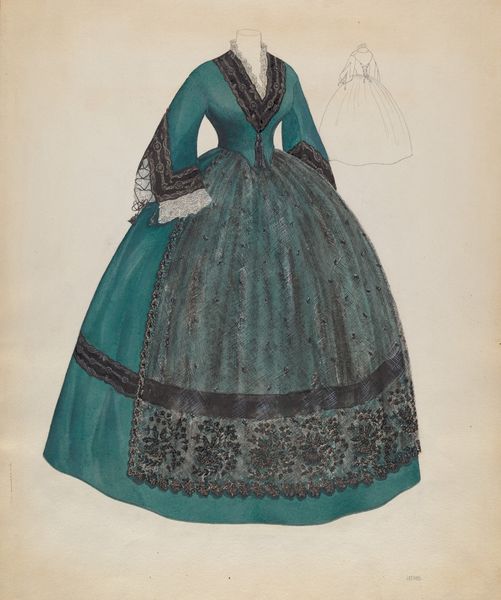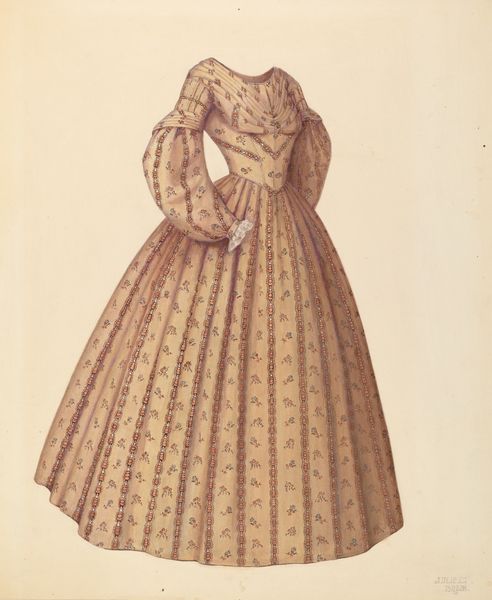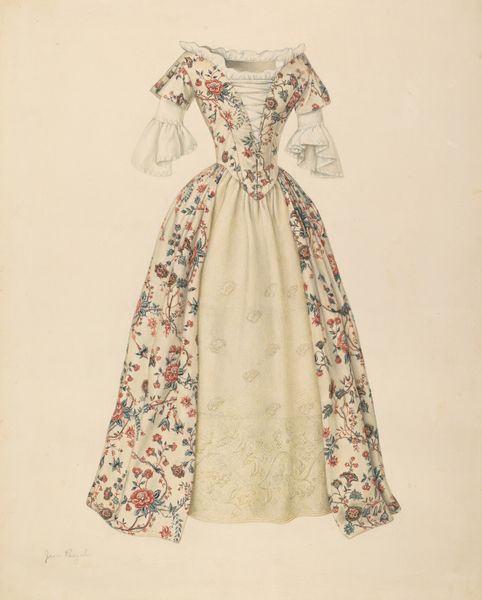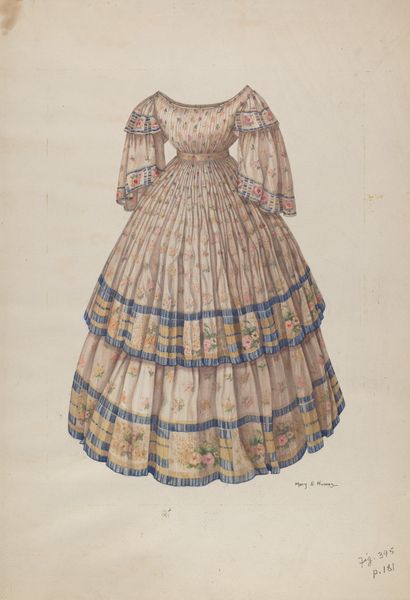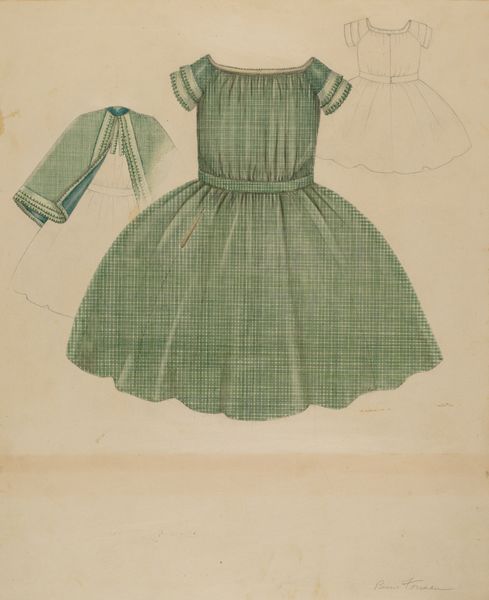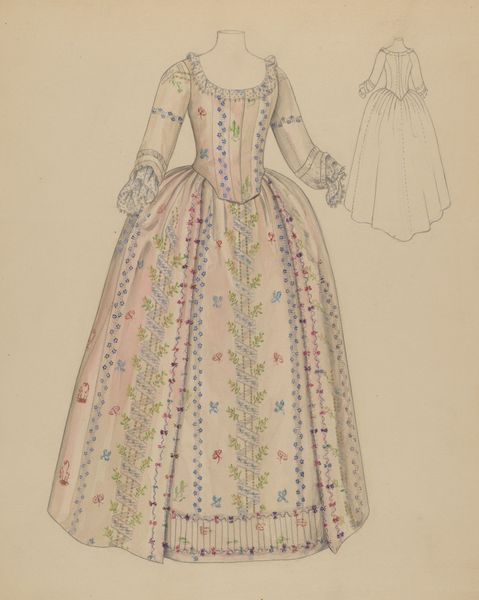
drawing, paper
#
portrait
#
drawing
#
paper
#
academic-art
Dimensions: overall: 45.7 x 31.5 cm (18 x 12 3/8 in.)
Copyright: National Gallery of Art: CC0 1.0
Editor: Here we have Melita Hofmann's "Dress," a drawing on paper, created sometime between 1935 and 1942. It's quite detailed, and the fabric pattern really catches my eye. How do you interpret this work? Curator: This image, though seemingly a simple dress design, speaks volumes about the cultural memory embedded in clothing. What stories do the florals tell? They evoke notions of femininity, domesticity. The careful rendering— the dedication to detail and to each pleat, to each flower— hints at a desire to preserve or perhaps idealize a certain moment or tradition. Editor: I see what you mean. The details almost feel…romanticized. Was this kind of dress common then? Curator: Well, this precise style probably was on the outswing as it resembles an older time and cut. What’s more interesting to me is why Hofmann chose to depict it in this manner. Look at the isolated skirt in the background— a ghostly echo. Is it memory? Longing? A symbolic presence or absent presence, representing maybe the limitations or even oppressions that existed around traditional gender roles and social expectations in that era, a bittersweet attachment to them? Editor: It’s like she's not just showing us the dress, but the whole world it belonged to, and how it was beginning to fade. I never considered fashion having such depth. Curator: Exactly. By examining these symbols—the dress, the flowers, the echo— we unlock narratives, connecting past and present through this silent yet resonant visual language. It allows for broader understanding about continuity within different people’s personal psychology as well. Editor: So much more than just a dress then. Thanks for helping me understand all of that.
Comments
No comments
Be the first to comment and join the conversation on the ultimate creative platform.
